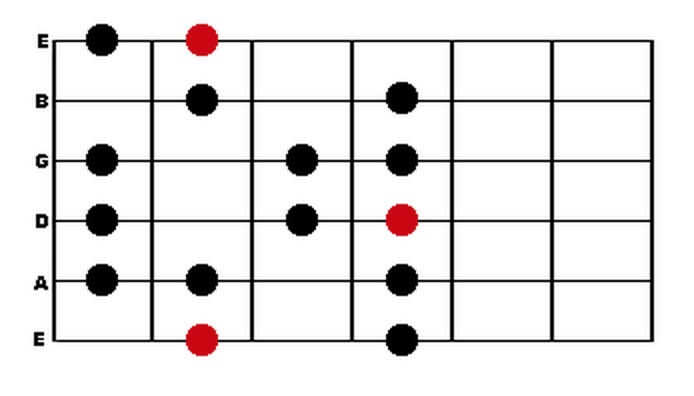Guitar scales are a super important part of learning to play guitar. They provide a foundation for players to learn, write and understand songs, and they’re a great way to build skills and techniques in all kinds of areas, such as hand coordination, flexibility, and rhythm. As a guitar player, you definitely want to learn about scales and their many uses, so it’s integral that you first know how to read guitar scales. In this lesson, we’ll be showing you how to do that.
There are Three Main ways to represent scales, and those are by using guitar tabs, notation, or scale charts. The most common type you’ll encounter though are scale charts, because they’re visually very easy to understand, so that’s what we’re going to focus on in this lesson. They mimic the fret board so you can see exactly where the notes are in relation to one another.
Check out this VIDEO GUITAR LESSON ON SCALES
Here’s an example of a guitar scale as a chart. The high E string is the first line at the top, while the low E string is the bottom line. You can see how it mimics your guitar’s fret board when you’re playing and looking down at your hands. To start playing it, the best place to start is with the low E string and then work your way up to the high E. The first note you’ll play is the red dot on the bottom string (indicating the octave), followed by the black dot on the bottom string. For the red dot, you’ll want to fret it with your middle finger, and then use your pinky to fret the black dot. The reason for this is that you should use your one finger per fret because it allows you to be the most fluid. As you advance as a player, you’ll see what we mean.

After playing those first two notes, move on to the string above it, which is the A and fifth string. There are three dots indicating the three notes to be played, so going from left to right, play the first one with your index finger, the second with your middle, and the third (which is on the fourth fret) with your pinky. You might feel some tension as your hand stretches, but that’s okay. Scales are great for increasing flexibility so the more you need to stretch, the better.
Work your way up the strings this same way, and after you have it down, try working your way backwards. After a while, you’ll have it memorized and won’t need to refer back to this chart.
This scale is a major scale and can actually be played anywhere on the sixth string, but a good fret to start with is the fifth fret because it provides for a comfortable position for beginners. Try starting with that fret and then practice by playing on other frets. Once you have this structure down, you can then look for other guitar scales to practice, such as the minor scale.
If playing lead guitar is your goal, I recommend you to check out our:



